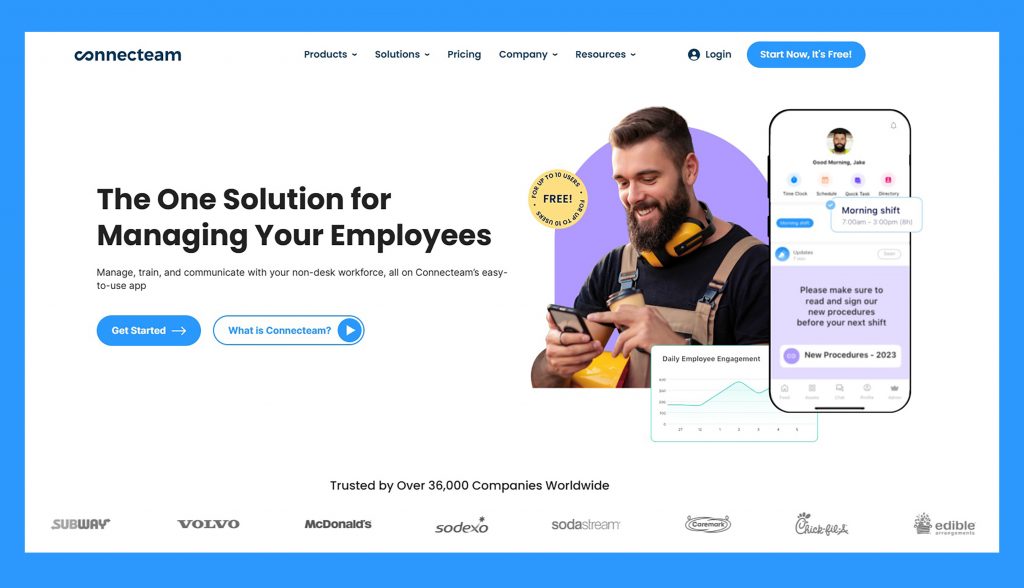Accessible Workspaces: Designing Environments that Support Disabled Entrepreneurs
Entrepreneurship knows no boundaries. The determination and creativity of entrepreneurs drive progress, regardless of the hurdles they may encounter. However, disabled entrepreneurs often face additional challenges due to physical and societal limitations. This is where accessible workspaces can make a significant difference. Beyond physical modifications, they represent equal opportunities and pathways to success. So, let’s find out how to create spaces that foster inclusivity and cater to everyone’s needs and abilities!
Meeting the Unique Needs of Disabled Entrepreneurs
Disabled entrepreneurs are a diverse group with distinctive requirements that demand our attention and empathy. Therefore, it is essential to grasp the breadth of these needs and offer tailored solutions to help them follow their dreams.
Physical Accessibility
Many disabled entrepreneurs face mobility challenges. Accessible workspaces should incorporate ramps, wider doorways, and adjustable height desks. These adaptations facilitate seamless movement within the workspace and ensure that entrepreneurs can easily navigate their environment.
Sensory Considerations
Entrepreneurs with sensory disabilities may require quiet spaces or noise-cancelling options. Lighting adjustments and tactile signage can also enhance accessibility for those with visual impairments.
Flexible Work Arrangements
Disabled entrepreneurs may need flexible work hours or the ability to telecommute when necessary. Providing these options can significantly improve their work-life balance.
Mental Health Support
Entrepreneurship can be mentally taxing. Offering resources and spaces that promote mental well-being, such as meditation rooms or counseling services, can be invaluable.

Image Credit
Vital Components of Accessible Workspaces
Accessible workspaces are more than physical adaptations. Instead, they aim to encompass a holistic approach to inclusivity. To truly support disabled entrepreneurs, it is crucial to integrate a range of essential features that go beyond the basics. These elements include:
● Physical Infrastructure: While ramps and wider doorways are fundamental, ergonomic furniture tailored to individual needs is equally important. Height-adjustable desks and ergonomic chairs promote comfort and productivity.
● Adaptive Technology: Inclusive workspaces should be equipped with adaptive technology like screen readers, voice recognition software, and assistive devices. These tools remove digital barriers and foster independence.
● Clear Navigation: Tactile signage, audible cues, and color-contrasting elements aid navigation for those with visual or cognitive impairments. Well-designed layouts also ensure a smooth flow through the workspace.
● Multi-sensory Environment: Incorporating elements like adjustable lighting and acoustics provides flexibility to accommodate various sensory needs.
● Collaborative Spaces: Designating areas for collaboration and brainstorming that are wheelchair-accessible encourages teamwork among all entrepreneurs.
Harnessing Technology to Enhance Accessibility
Technology plays a vital role in leveling the playing field for disabled entrepreneurs. Businesses can use technology to advance careers and create truly inclusive workspaces.
For instance, entrepreneurs with disabilities can use numerous assistive devices, from screen readers to voice recognition software, to interact with digital platforms and communicate effectively. Plus, they can adapt their devices and software to their specific needs, ensuring a seamless workflow.
Technology also opens the possibility of remote work. Telecommuting and virtual collaboration tools help disabled entrepreneurs to work from anywhere. That option reduces physical barriers and increases flexibility.
Lastly, technology offers accessible online resources and courses that enable entrepreneurs to acquire new skills and knowledge, further enhancing their competitiveness. Digital platforms also facilitate accessible communication. This makes it easier for disabled entrepreneurs to connect with clients, partners, and customers.

Image Credit.
Embracing Inclusive Design Principles
Creating accessible workspaces means fostering an inclusive mindset that empowers all entrepreneurs. With inclusive design principles, disabled entrepreneurs work in spaces where their ideas are valued, their needs are met, and their potential is fully realized.
● Universal Design: This approach ensures that spaces, products, and services are usable by as many people as possible, regardless of their abilities. It promotes versatility and flexibility in workspace design.
● User-Centered Design: Placing the needs and experiences of users at the forefront leads to intuitive and efficient workspaces. Feedback and collaboration with disabled entrepreneurs are central to this approach.
● Sensory Considerations: Inclusive design embraces sensory diversity. It incorporates elements like adjustable lighting and acoustics, benefiting entrepreneurs with various sensory needs.
● Collaborative Spaces: Creating workspaces that encourage collaboration while being wheelchair-accessible fosters teamwork among all entrepreneurs.
Navigating Budget Challenges to Foster Accessible Workspaces
Creating an inclusive work environment doesn’t have to be cost-prohibitive. Innovative solutions can be found even with limited resources. Take the example of Professional Movers Ottawa, a company committed to promoting inclusivity within its workspace.
Facing budget constraints, they devised a creative solution by engaging their employees. They initiated an “Inclusivity Challenge,” encouraging team members to propose affordable accessibility enhancements. One employee suggested a low-cost, high-impact solution—a mentorship program. This program paired disabled entrepreneurs with seasoned mentors from within the company, offering guidance and support at no additional cost.
Additionally, they leveraged community resources by partnering with local organizations specializing in accessibility. This collaboration allowed them to access grants and expertise that furthered their inclusivity initiatives without straining their budget.
So, by thinking outside the box and engaging their employees, it’s possible to create a more inclusive work environment without breaking the bank. This example demonstrates that with creativity and community collaboration, businesses can overcome budget constraints and contribute to a more accessible entrepreneurial landscape.

Image Credit
The Transformative Influence of Accessible Workspaces
Inclusive workspaces profoundly impact the entrepreneurial journey for disabled individuals and the entire business community. The positive effects of these inclusive environments ripple far and wide as they enable everyone to manifest their business goals and build a successful career. Here are some benefits:
● Increased Productivity: Entrepreneurs thrive in spaces designed to meet their unique needs. Such an environment increases productivity as entrepreneurs can focus on their work without physical barriers.
● Fostering Creativity: Removing accessibility obstacles allows disabled entrepreneurs to unleash their creativity fully and offer fresh ideas and innovative solutions that benefit the entire workspace.
● Enhanced Employee Satisfaction: Inclusivity fosters a supportive atmosphere, boosting overall employee satisfaction. When individuals feel valued and accommodated, they are more motivated to work toward their business goals.
● Innovation and Collaboration: Inclusive workspaces encourage collaboration among diverse entrepreneurs, sparking innovation through varied perspectives and experiences.
Empowering Entrepreneurial Success
In crafting accessible workspaces, we pave the way for disabled entrepreneurs to thrive, innovate, and shape a more inclusive entrepreneurial landscape. Understanding their unique needs, integrating technology, embracing inclusive design principles, and overcoming budget constraints enables us to create environments where all entrepreneurs can flourish. The positive impact of these workspaces extends beyond physical modifications, fostering productivity, creativity, and collaboration.
#disabledentrepreneurs #entrepreneurship #empowerment #mentalhealth #workspaces #accessibleworkspaces #budgeting #inclusivedesigns #technology
ADVERTISEMENTS













0 Comments
1 Pingback